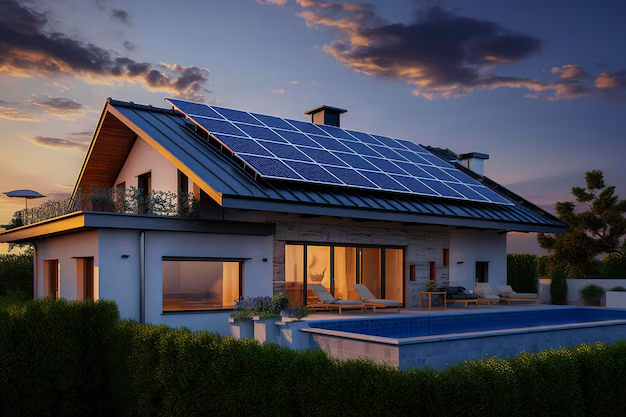Green Housing Revolution: The Rise of Sustainable Living in Real Estate
From the area’s cost of living to the location of the nearest hospital, people consider many things when deciding where to move. Additionally, an emerging trend has many prioritizing sustainability. This reality has resulted in developers, real estate professionals, and other concerned parties highlighting eco-friendliness.
Amenities vary significantly between properties and countries, but can include:
> On-site recycling
> Vehicle charging
> Vegetable gardens
> Solar panels
> Energy-saving systems
What are some sustainable real estate examples, and why are potential residents drawn to them?
Combining Sustainability and Necessary Upgrades
One increasingly popular trend involves landlords, property managers, and others exploring how to implement sustainable enhancements while simultaneously tackling functional improvements. Such options can maximize a building’s appeal to current and potential residents, while making it more future proof.
Mounting Solar Panels to Balcony Railings
One forward-thinking landlord capitalized on this multi-benefit trend by attaching solar panels to Toronto apartment building balconies once it was time to replace their railings. This approach concerns building-integrated photovoltaics, which make the solar panels directly part of a building’s structure.
The panels comprise approximately 3,937 feet and accommodate 7% of the building’s energy use (enough to cover 7% of the building’s central energy consumption). Additionally, since they came with 25-year performance warranties, those who installed them can feel confident about the panels continuing to assist with power needs for years.
Some people dislike solar panels’ conspicuousness, appreciating their sustainability benefits but wishing they blended into the property more. Fortunately, energy efficiency and materials advancements have opened possibilities for how and where people can use solar panels. As such, many are increasingly less obvious, especially when mounted in unexpected places.
Those familiar with building-integrated photovoltaics believe they could be game-changing for new and existing residential buildings. These green energy upgrades harness the latest technologies and show occupants how solar power can look different than expected. Plus, residents can enjoy ongoing cost savings since operating expenses are typically low despite higher installation costs.
Designing for Style-Oriented, Future-Minded Residents
Curb appeal still matters as people look for places to live. Many appreciate stylish details emphasizing how the design team cared as much about form as function. Similarly, home hunters want to check whether the chosen materials will stand up over time. Even those initially picked for sustainability may not uphold these characteristics if they need frequent repairs.
These realities explain why architects and other professionals evaluate practical ways to highlight stylish and durable options in sustainable residential buildings. Doing so attracts potential property owners who desire hassle-free living now and in the future.
Choosing Wood for a Standout Appearance and Excellent Durability
A French architecture firm recently constructed a mass timber building standing over 164 feet tall. This Parisian apartment building is one of the first wooden towers to appear on a European skyline.
The team sourced all wood from French forests and transported it via the River Seine.
Additionally, they selected specific types based on desired characteristics. Douglas fir for the external columns provides moisture resistance, while the internal ones are beech, included because of compressive strength.
Residential amenities include a shared terrace with a partially covered area perfect for activities ranging from yoga classes to movie nights. A communal vegetable and herb garden offers easy access to fresh produce.
Each unit features large windows to let in plenty of natural light, potentially reducing how often residents need to use artificial illumination and raise their electricity bills. The apartment building also has a modular layout with smaller units above larger ones. This strategy makes them easier to combine later, such as to change their use.
People who decide to rent apartments must weigh the impact of additional costs. For example, required security deposits could equal 1.5 times the monthly rent. Conversely, tenants often appreciate not having to pay property taxes. In the case of this wooden apartment building, all 132 units are occupied, arguably indicating their thoughtful features and aesthetic beauty resonated with people.
Showing Interest in Sustainable Retirement Communities
As people start thinking about life as they age, they begin thinking about writing their wills and ensuring they have all the resources needed for safe support during everyday life. Some individuals also realize they want to live in places built to uphold sustainable values.
Broadening People’s Perceptions of Retirement Communities
Most individuals probably would not connect sustainable real estate to their assumptions about purpose-built places for residents in their golden years. However, things are changing, and some of these offerings keep sustainable living at the center.
One example is California’s Enso Village, located in Healdsburg. This self-described “life plan community” lets residents enjoy sustainable, mindful lives with various carefully chosen amenities. People can take farm-to-table cooking classes with an executive chef, center themselves in the community meditation hall or try chair yoga sessions.
This retirement community is the first of its kind in the United States. The idea emerged when teachers from the San Francisco Zen Center realized they should start thinking about a place to reside later in life and wanted it to uphold their existing values.
The location has 221 independent living units, 60% of which had occupants as of May 2024. There are also assisted living and memory care options. The developers plan to create several more communities like this one, including one set to open in San Francisco in 2027.
Ongoing Momentum in Sustainable Real Estate
As people decide where to live and proceed with property investments, many realize they want their sustainable values to influence the outcomes. These trends show numerous real-life possibilities, and more will likely emerge for the foreseeable future.
